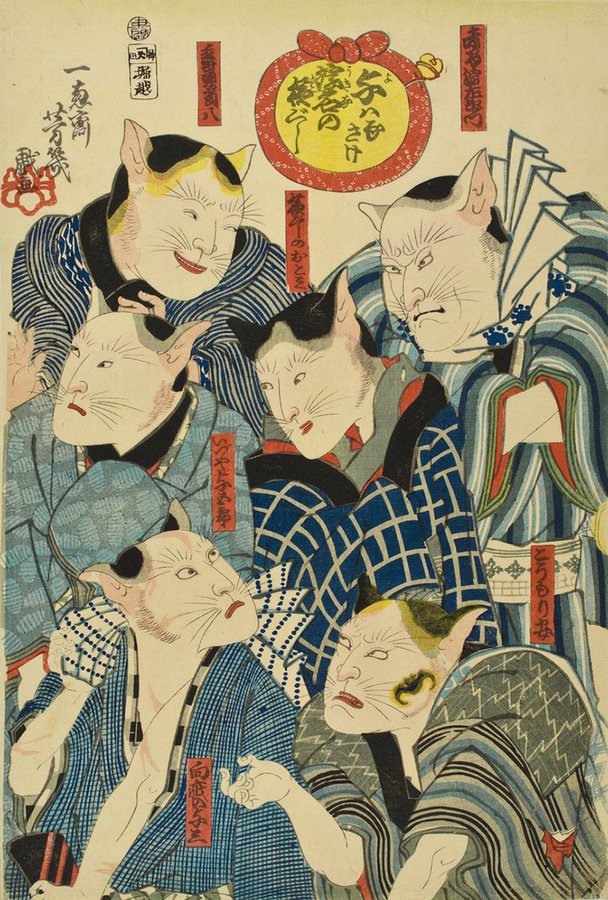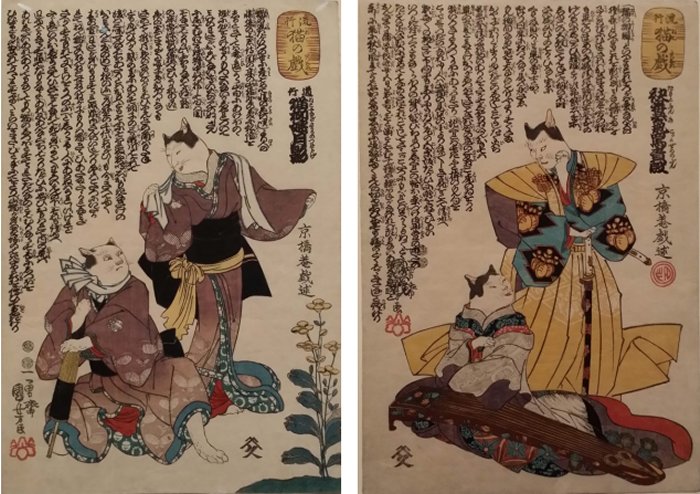Why Were Actors Painted As Cats By Ukiyo-e Artists In Japan?
Conny Waters - AncientPages.com - If you enjoy art, you may have stumbled upon older Japanese paintings portraying people as cats. It may look funny and cute, but it's not always a subject of pure humoristic entertainment but rather restrictions and censorship.
Painting from 1860 from The Story of Otomi and Yosaburo' by Utagawa Yoshiiku. Credit: Public Domain
If you go to Japan, you can find many places where images of cats suddenly appear. In modern Japan, there are cat cafes, shrines, temples, a cat train station master, and a cat island. Cat Day is celebrated on February 22. Japan does cat worship better than any country on Earth.
Cats are said to have arrived in Japan about 1,000 years ago. Cats traveling onboard ships carrying Buddhist scriptures from China to Japan entered not only the country but the heart of the Japanese people.
Cats were considered guardians of Buddhist scriptures, but they were also troublemakers. Their mischievous deeds, such as stealing food or destroying things, have been the subject of many Japanese folktales. The cat's mysterious nature led to the creation of the Bakeneko, or "cat monster," which is a legendary yokai in Japanese mythology.
Stories of the supernatural legends of Bakeneko can be found in many Japanese folktales. The most famous account is the tale of the Nabeshima Bakeneko Disturbance in Saga Prefecture.
Many Japanese artists loved cats, which is one reason cats are found in paintings, prints, and sculptures.
Left: The Scene of Torture by Scolding from the play The Stinky Sleeve from the series Fashionable Cat Frolics. Print by Utagawa Kuniyoshi. - Right: Cats Performing in the Michiyuki Scene in the play Neko yanagi sakari no tsukikage from the series Fashionable Cat Frolics. Print by Utagawa Kuniyoshi. Credit: Yatta-Tachi
The great Japanese ukiyo-e master Utagawa Kuniyoshi (1798 – 1861) is famous for his love of cats, and these lovely felines kept him company in his studio.
Ukiyo-e (literally meaning "Pictures of the Floating World") is a Japanese art that emerged during the Edo period (1603 – 1868) when Japan focused on culture instead of wars.
Ukiyo-e artists produced paintings and woodblock prints depicting everyday life and people's interests. The word ukiyo refers to the world of ordinary people, and e means "picture."
Thanks to advances in woodblock printing techniques, Ukiyo-e art became an appreciated art form in Japan's popular culture. Many Ukiyo-e prints and paintings depict Kabuki actors, sumo wrestlers, and beautiful women, but scenes from history and folk tales, including travel scenes landscapes, and erotica, are also popular.
In the mid-19th century, the faces of Kabuki actors were suddenly replaced with cat faces. The government banned pictures of actors and courtesans, considering them detrimental to public morals.
Artists had to find a way to work around the limitations of censorship, and they successfully produced great paintings and prints giving the actors the look of cats, but enough of their features were left in place. It allowed Kabuki fans to recognize the actor even though he appeared like a cat.
Updated on April 20, 2024
Written by Conny Waters – AncientPages.com Staff Writer
Copyright © AncientPages.com All rights reserved. This material may not be published, broadcast, rewritten or redistributed in whole or part without the express written permission of AncientPages.com
Expand for referencesHarkins, William E. "Japanese Animal Prints" Impressions, no. 15 (1989). Accessed February 11, 2020.
Linda Lombardi - Cats In Japanese Art - Printed, Painted and Sculpted Felines
Cindy Caraturo - Life of Cats: Selections from the Hiraki Ukiyo-e Collection
More From Ancient Pages
-
 On This Day In History: First Siege Of Rome Began – On March 2, 537
News | Mar 2, 2017
On This Day In History: First Siege Of Rome Began – On March 2, 537
News | Mar 2, 2017 -
 Eye Of Horus – Powerful, Ancient Egyptian Symbol With Deep Meaning
Ancient Symbols | Jan 21, 2019
Eye Of Horus – Powerful, Ancient Egyptian Symbol With Deep Meaning
Ancient Symbols | Jan 21, 2019 -
 Controversial Theory Suggests Atlantis Was In Scandinavia – Surprising Evidence Presented By Ancient Writer
Ancient Mysteries | Sep 5, 2018
Controversial Theory Suggests Atlantis Was In Scandinavia – Surprising Evidence Presented By Ancient Writer
Ancient Mysteries | Sep 5, 2018 -
 Shennong – Chinese ‘King Of Medicines’ Who Invented Farming Tools And Herbs For Treating People’s Diseases
Chinese Mythology | Oct 13, 2021
Shennong – Chinese ‘King Of Medicines’ Who Invented Farming Tools And Herbs For Treating People’s Diseases
Chinese Mythology | Oct 13, 2021 -
 On This Day In History: Johannes Kepler ‘Father Of Modern Astronomy’ Was Born – On Dec 27, 1571
News | Dec 27, 2016
On This Day In History: Johannes Kepler ‘Father Of Modern Astronomy’ Was Born – On Dec 27, 1571
News | Dec 27, 2016 -
 Unseen 3,000-Year-Old Inscription On Biblical-Era Piece Of Pottery Deciphered By Researchers
Archaeology | Jun 21, 2017
Unseen 3,000-Year-Old Inscription On Biblical-Era Piece Of Pottery Deciphered By Researchers
Archaeology | Jun 21, 2017 -
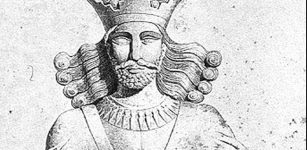 Darabgerd: One Of The Oldest Cities Dated To Achaemenid Era
Featured Stories | Jan 28, 2021
Darabgerd: One Of The Oldest Cities Dated To Achaemenid Era
Featured Stories | Jan 28, 2021 -
 LIDAR Discovers Circular Iron Age Village At Cap d’Erquy, France
Archaeology | Apr 4, 2024
LIDAR Discovers Circular Iron Age Village At Cap d’Erquy, France
Archaeology | Apr 4, 2024 -
 2,250-Year-Old Iron Age Settlement Discovered Near Upton-Upon-Severn
Archaeology | Jan 4, 2022
2,250-Year-Old Iron Age Settlement Discovered Near Upton-Upon-Severn
Archaeology | Jan 4, 2022 -
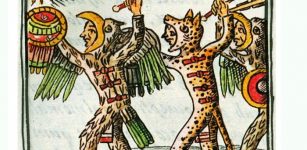 Florentine Codex: Remarkable Manuscripts About Life Of The Aztecs
Ancient History Facts | Nov 15, 2016
Florentine Codex: Remarkable Manuscripts About Life Of The Aztecs
Ancient History Facts | Nov 15, 2016 -
![Horses in the Eurasian steppes: Already 5000 years ago, they served pastoralists as a source of milk and a means of… [more] © A. Senokosov](https://www.ancientpages.com/wp-content/uploads/2021/09/pastoraliststeppe15-307x150.jpg) Milk Enabled Massive Steppe Migration – A New Study
Archaeology | Sep 24, 2021
Milk Enabled Massive Steppe Migration – A New Study
Archaeology | Sep 24, 2021 -
 What Is A Mural Of Tepoztēcatl, Aztec Rabbit God Of Alcohol Doing In A Mexican Church?
Archaeology | Oct 15, 2022
What Is A Mural Of Tepoztēcatl, Aztec Rabbit God Of Alcohol Doing In A Mexican Church?
Archaeology | Oct 15, 2022 -
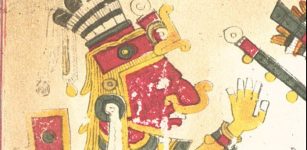 God Patecatl – Father Of ‘Four Hundred Rabbits’ In Aztec Beliefs
Aztec Mythology | Mar 9, 2018
God Patecatl – Father Of ‘Four Hundred Rabbits’ In Aztec Beliefs
Aztec Mythology | Mar 9, 2018 -
 Sculptures-Menhirs Dated To The Copper Age Unearthed In Los Millares (Almería) Spain
Archaeology | Mar 14, 2022
Sculptures-Menhirs Dated To The Copper Age Unearthed In Los Millares (Almería) Spain
Archaeology | Mar 14, 2022 -
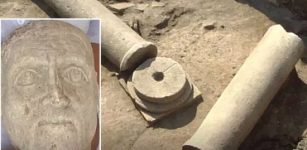 Third-Century Sculpture Of Roman Emperor Aurelian Unearthed In Bulgaria
Archaeology | Sep 5, 2018
Third-Century Sculpture Of Roman Emperor Aurelian Unearthed In Bulgaria
Archaeology | Sep 5, 2018 -
 Terahertz Imaging Reveals Hidden Inscription On Early Modern Funerary Cross
Archaeology | Apr 26, 2022
Terahertz Imaging Reveals Hidden Inscription On Early Modern Funerary Cross
Archaeology | Apr 26, 2022 -
 Virtual Nubia: Sudan’s Medieval Monasteries Digitally Reconstructed By Polish Archaeologists
News | Oct 8, 2020
Virtual Nubia: Sudan’s Medieval Monasteries Digitally Reconstructed By Polish Archaeologists
News | Oct 8, 2020 -
 Ancient Native Americans’ Encounter With The Star People – An Otherworldly Rescue?
Ancient Mysteries | Jul 20, 2021
Ancient Native Americans’ Encounter With The Star People – An Otherworldly Rescue?
Ancient Mysteries | Jul 20, 2021 -
 Being Left-Handed Was A Sign Of Evil Until Only Recently
Ancient History Facts | Jun 29, 2018
Being Left-Handed Was A Sign Of Evil Until Only Recently
Ancient History Facts | Jun 29, 2018 -
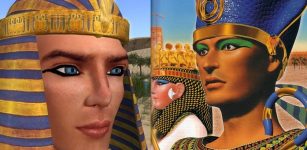 Ancient Egyptian Men Used Eye Makeup For Many Reasons
Ancient History Facts | May 9, 2016
Ancient Egyptian Men Used Eye Makeup For Many Reasons
Ancient History Facts | May 9, 2016

